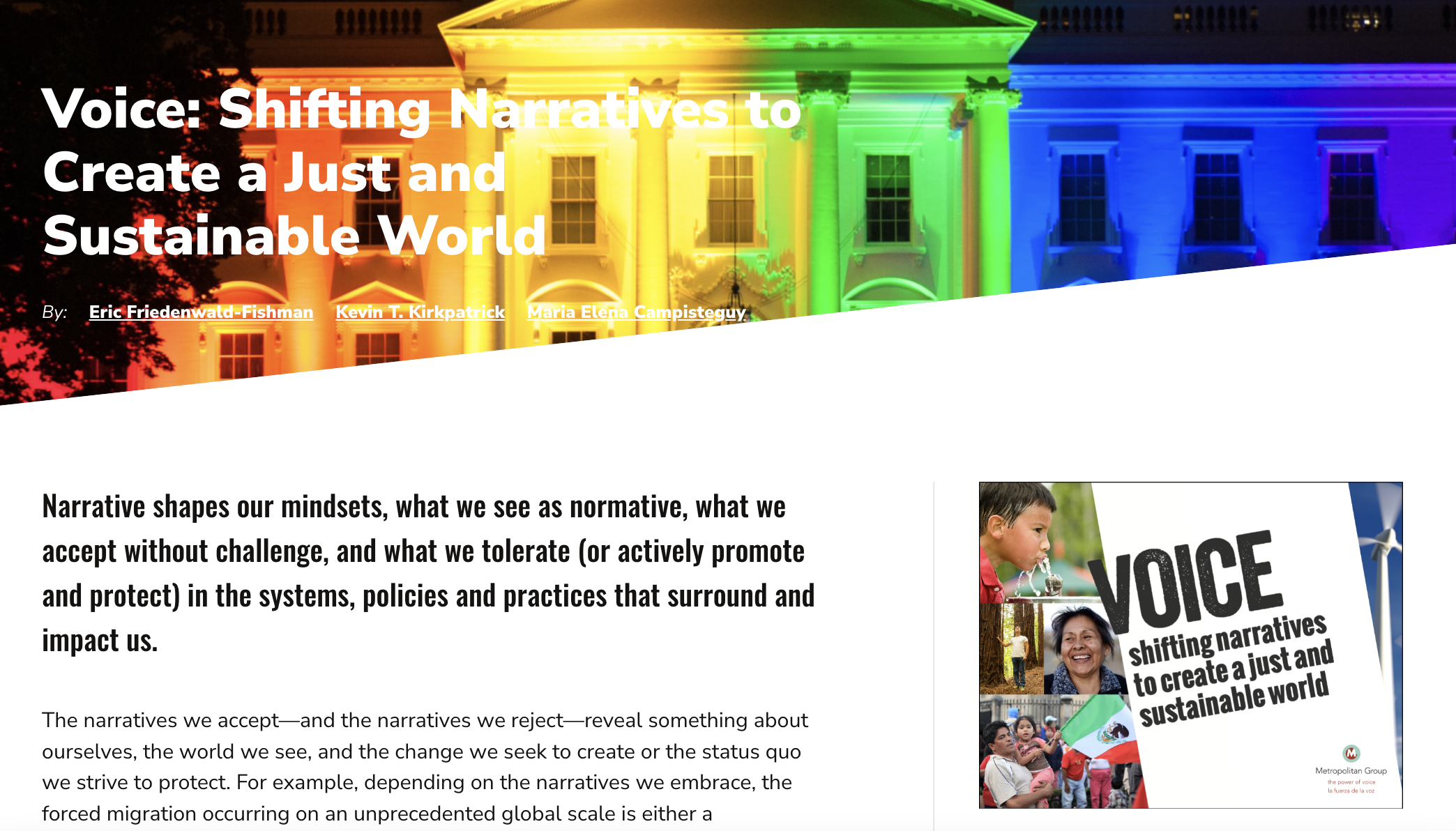
Beyond the hero: How narrative can shift power around who leads and who has voice
An emergent learning initiative at the Robert Wood Johnson Foundation, in partnership with Metropolitan Group and informed by dozens of people working to advance leadership for greater equity
Look out for our new Stanford Social Innovation Review six-part series that launches Feb. 22! It offers inspiration and concrete tools for advancing leadership that disrupts structural injustices, and honest reflections from the authors about the unavoidable and necessary messiness that comes with changing such an established field as leadership development.
Recognizing and Resourcing Leadership in All Its Forms
Leadership is as complex and dynamic as the people, communities, and situations that call it into being. The inspiration and action that drive change are both individual and collective. Yet dominant culture and systems continue to perpetuate an “individual hero” narrative. That narrative often shuts out the very people who are closest to issues and who possess the seeds of innovation, resilience, and transformation to solve them.
Join a group of funders and practitioners in leadership and leadership development for social change in working to broaden the narrative around leadership—through stories, policies, funding, behaviors, and culture—to be more inclusive, equitable, and effective.
Get in touch if you’re interested in joining this community more formally or have any questions about the resources here.
NARRATIVE
NARRATIVE
Narratives are aggregations of the stories people see, hear, and experience. They convey specific interpretations of the world and how it works, making them powerful in shaping mindsets and actions. Far more than words and messages, narratives are shaped by people’s lived experiences, environments, and echo chambers. Statues, an experience, a story passed down, or a TV show are all pieces of input that shape narratives.
To learn more, please read this article about narrative and/or watch this short video.
Broadened Narrative About Leadership for Social Change
This document outlines the core elements of the broadened narrative and provides detail on how to live into it via words, programs, funding, and other actions.
Narratives are more than words and stories. Narrative shift is only effective if it plays out in policy/practice and culture/behavior in addition to language and stories. Below are tools and resources to support your work in aligning your organization’s narrative efforts across the three levels of narrative change:
Language/Stories: A field guide for how to tell stories that move beyond the individual hero model and showcase collective leadership that is anchored in the strengths and wisdom of communities. Part of this guide is a tool for assets-based language.
Policies/Practices: A lens to examine your organization’s policies and practices for alignment with the leadership narrative.
Culture/Behavior: Tool for translating values into leadership behaviors that authentically live out the narrative and create the environment for greater equity and inclusion in organizations.
Three Levels of Narrative Change
The inspiration and input for broadening the narrative came, in part, from five grassroots organizations*** RWJF convened to explore how leadership is expressed (and must be resourced and supported) in a diverse set of community contexts: movements, collective models, rural areas, and Indigenous communities. Click here to read their five core themes that call for philanthropy to reimagine how they fund and support community-led, collective leadership as well as a webinar of their Summit.
*Building Movement Project, Nexus Community Partners, Jomoworks, The Seventh Generation Fund, and Rural Development Initiative.






